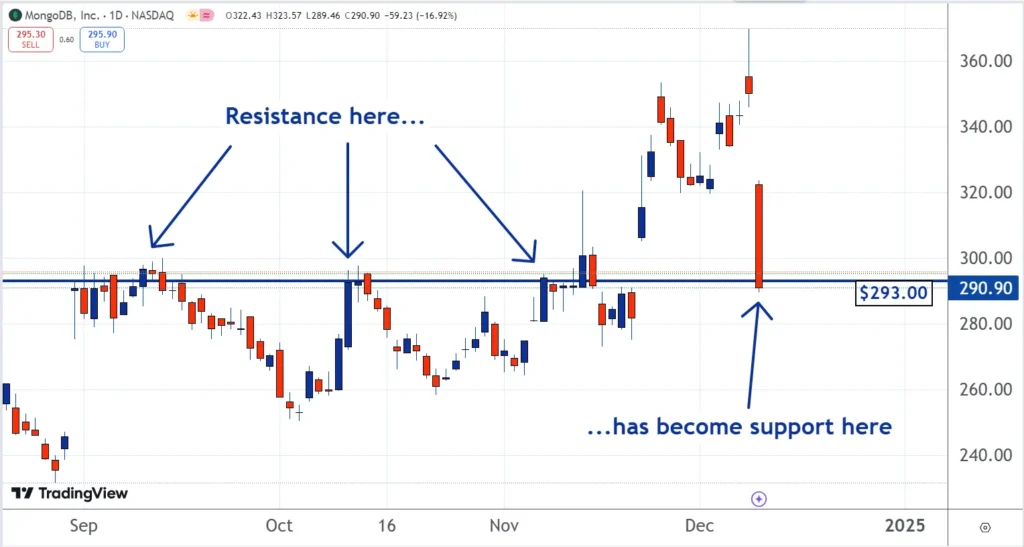MongoDB Stock Bounces Back After Recent Drop
Shares of MongoDB, Inc. MDB increased slightly on Wednesday after a significant decline of nearly 17% the day before.
Stock Stabilizes at Key Support Level
Following Tuesday’s volatility, the stock found a support level around $293, becoming a focal point for our technical analysis team, who have dubbed it our “Stock of the Day.”
Impressive Earnings but Mixed Reporting
On Monday, MongoDB announced third-quarter earnings of $1.16 per share, significantly outperforming estimates of 67 cents. Their sales also surpassed expectations, coming in at $529 million compared to the anticipated $498 million.
Understanding GAAP vs. Non-GAAP Profits
It’s essential to interpret these headlines correctly. GAAP stands for Generally Accepted Accounting Principles. Companies may also report non-GAAP earnings, which can mask certain losses.
For example, if a factory suffers a $10 million loss due to a fire, a company may choose not to include this in their non-GAAP earnings but must on a GAAP basis.
In MongoDB’s case, while they reported a loss of 13 cents per share on a GAAP basis—due to various accounting adjustments—non-GAAP earnings appeared positive. This was largely because the company added $1.75 per share from “expenses associated with stock-based compensation.”
The Reaction to Earnings
Given this complex accounting, it is easy to see why the stock took a hit. The $293 level held strong, serving as both a past resistance point and now a support level.

The Dynamics of Selling and Buying
This situation is often referred to as “seller’s remorse.” Traders who sold shares around $293 regretted their decision when the stock price increased in early November. Many sought to repurchase the shares at the same price they sold.
Consequently, as the stock dipped back to around $293, these traders placed buy orders, creating a strong support level at this previously identified resistance point.
Key Takeaways on Earnings Reporting
Investors should remain cautious; sometimes, the reported earnings can be misleading. The differences between GAAP and non-GAAP figures are critical and can significantly affect understanding a company’s financial health.
Read Next:
Photo: Shutterstock
Market News and Data brought to you by Benzinga APIs

